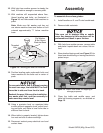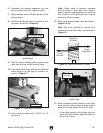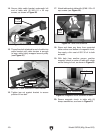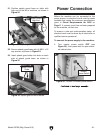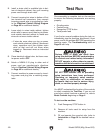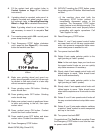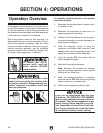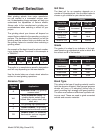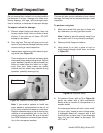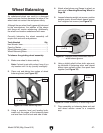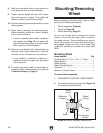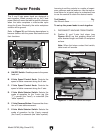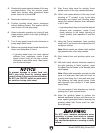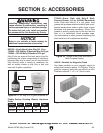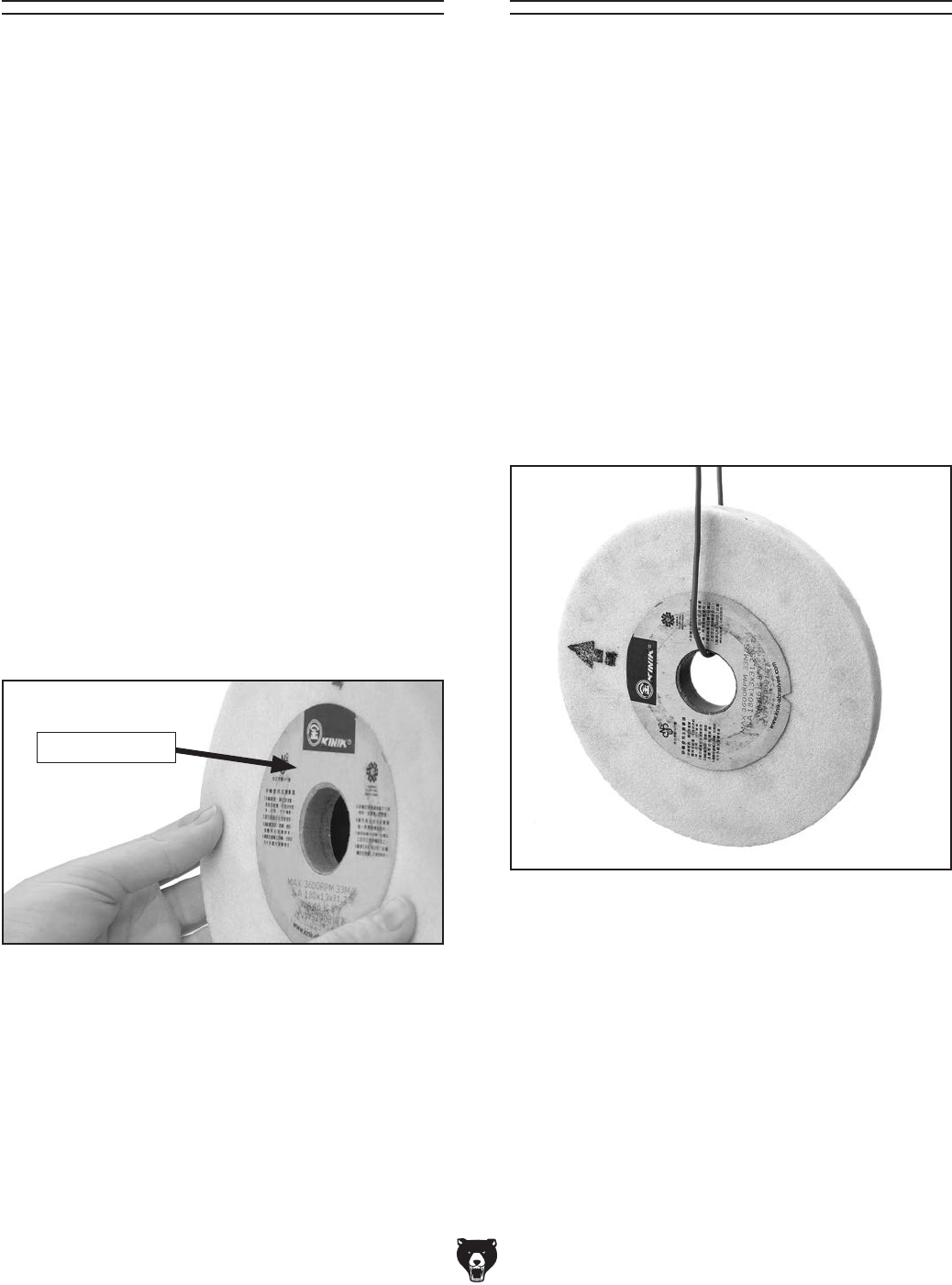
-26-
Model G0763 (Mfg. Since 8/13)
Wheel Inspection
Do not assume that a wheel is in sound condition
just because it is new—damage can often occur
during shipping, with age, with prolonged expo-
sure to moisture, or because of improper storage.
To inspect a wheel for damage:
1. Remove wheel flange and sleeve, then look
for any cracks, chips, nicks, or dents in wheel
surface. If you see any of these, DO NOT
attempt to use wheel.
2. Do a ring test. This test will give you an indi-
cation of any internal damage that may not be
obvious during a visual inspection.
3. Inspect paper washers on both sides of grind-
ing wheel (see Figure 28).
These washers are cushions between wheel
sleeve and flange and grinding wheel. Without
paper washers, cracks can be spawned from
center of wheel when the arbor nut is tight-
ened. Over time, these cracks can radiate
outward and the wheel may explode during
operation, possibly causing injury.
Figure 28. Important wheel paper washer.
Paper Washer
Note: If you need to replace or install new
paper washers, replacements can be cut out
of any thick construction paper or card stock.
Regular notebook paper or paper from a copy
machine is not acceptable, as it is too thin to
provide required cushion. Be sure to transfer
any RPM limitations and wheel type informa-
tion to the new paper washers.
R i n g Te s t
This test will give you an indication of any internal
damage that may not be obvious during a visual
inspection.
To perform a ring test:
1. Make sure wheel that you test is clean and
dry; otherwise, you may get false results.
Note: If wheel is wet with coolant, hang it in a
dry location until it is dry (usually overnight).
2. Remove wheel flange and sleeve.
3. Hang wheel in air with a piece of cord or
string looped through wheel bore, as shown
in Figure 29.
4. At locations shown with an X in Figure 29,
gently tap wheel with a light non-metallic
device such as handle of a screwdriver or a
wooden mallet.
An undamaged wheel will emit a clear metal-
lic ring or “ping” sound in each of these spots.
A damaged wheel will respond with a dull
thud that has no clear tone. If you determine
from ring test that wheel is damaged, DO
NOT use it!
x
x
Figure 29. Ring test setup.
x
x
x
x



